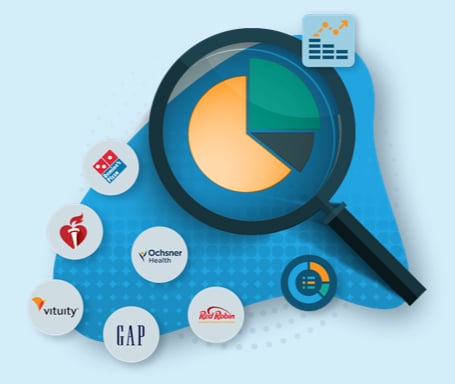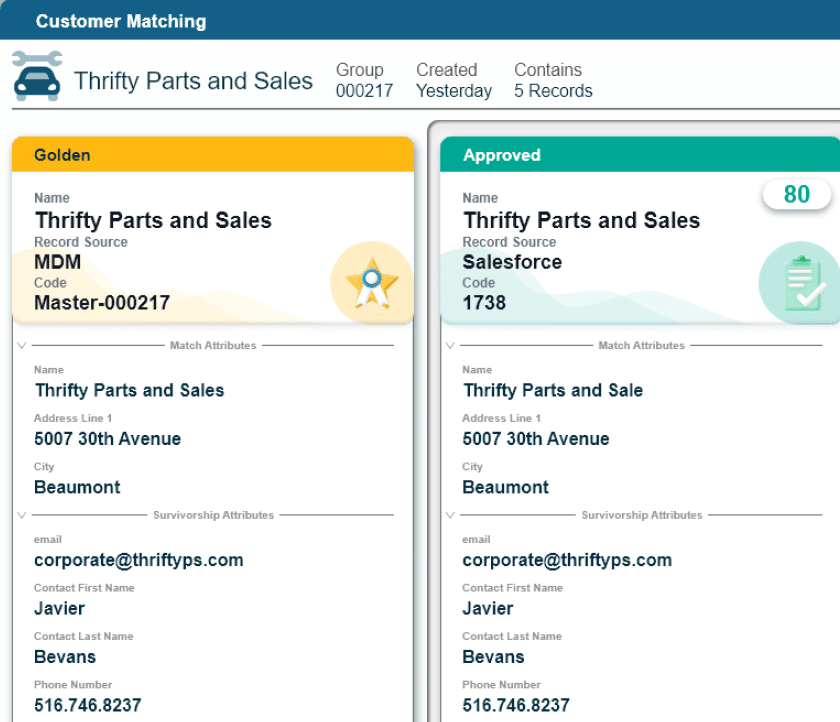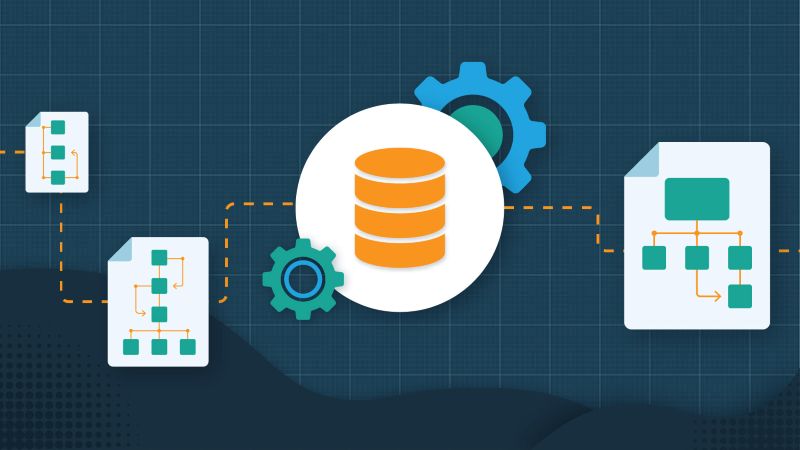Key Takeaways
Directly pushing golden records into systems like CRMs can cause data duplication and confusion — especially when records need to be split or merged later.
For operational MDM, update existing records with the best attribute values from the golden record to preserve system integrity and reduce maintenance.
In analytical use cases, golden records improve reporting accuracy and enable flexible, powerful analysis by serving as a single source of truth.
Master data management (MDM) teams often invest significant effort in defining and generating golden records. However, they sometimes overlook the potential risks of publishing these records outside the MDM system. In this article, we’ll take a look at the risks of publishing golden records to source systems in operational MDM, alternatives to this design and exceptions when working with an analytical MDM solution.
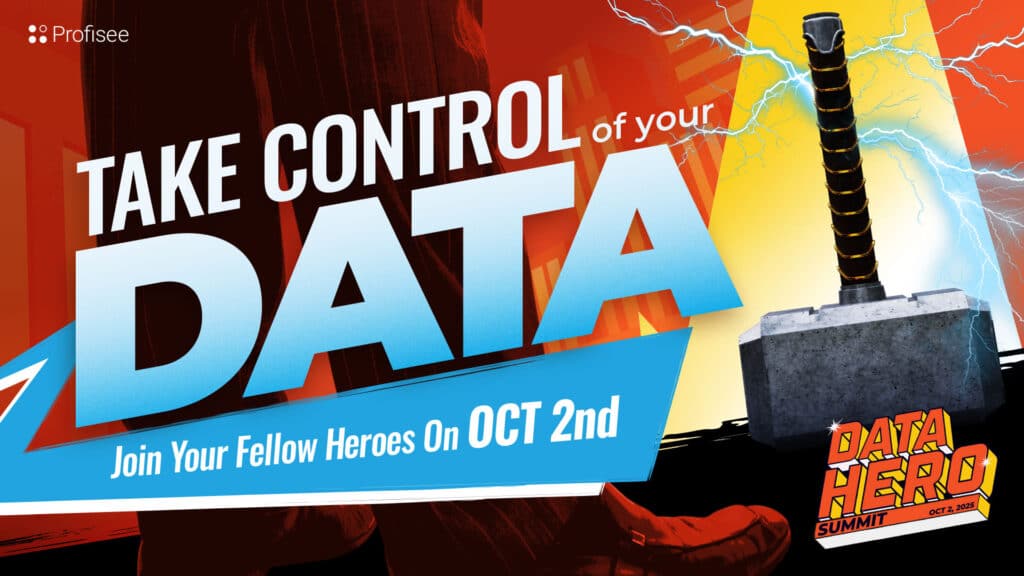
The 2025 Data Hero Summit
The Problem with Publishing Golden Records to Source Systems
Imagine you are the MDM leader at a travel company, aiming to master customer data to optimize the business’ cross-selling opportunities.
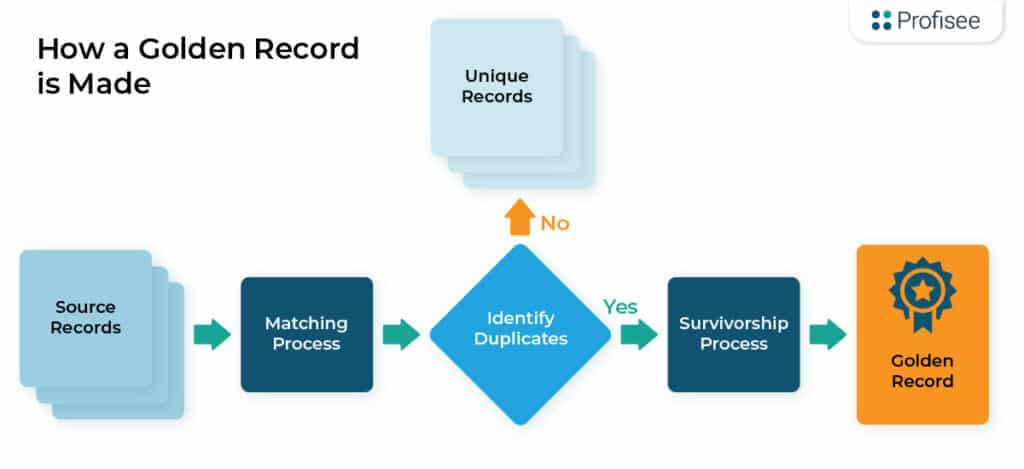
Your matching process has determined which records are duplicates, and in the survivorship step you specified which pieces of information from which source records are the most fit-for-use on your golden record. You may be tempted to publish the golden record to the CRM.
Don’t be so hasty.
Publishing your golden record directly to the CRM can lead to duplicate and incorrect data when master data changes in the future. Not to mention the greater potential for end users to get confused and lose trust in the system. Why does this happen?
For instance, you might need to split a golden record into two or merge multiple golden records into one. If you have published the golden records to the CRM, now you’ve got re-processing and cleaning to do. MDM teams often spend a lot of their time doing this triaging/troubleshooting, impacting their ability to deliver more valuable MDM solutions.
Harmonizing Source Systems Using Golden Records
An alternative solution exists. For operational MDM, it’s unnecessary to publish the golden record directly to the CRM. All we need is to ensure the CRM has the same values as the golden record. We already have a record in MDM which conforms to the CRM’s identification and structure, and we can use that record as the delivery mechanism for the desired attribute values with minimal additional work.
When updating the golden record, we also replicate the best values onto the relevant source system records and publish them to the source system.

Another way to describe this is, “Just update the existing CRM records from the golden record.” This design eliminates the need to publish new records and logical concepts into an already crowded operational system.
The golden record in MDM is simply the placeholder record that we harmonize other systems or records from. Of course, every design has its pros and cons — I’d love to hear your thoughts on the potential downsides to this approach. Please comment below and share your thoughts.
Considerations for Analytical MDM
It’s important to note that while the pattern above can be used in all use cases, pure analytical scenarios do benefit from publishing the golden record. It is extremely useful to add the golden record and its attributes to the customer dimension in the warehouse. Dimensions are frequently updated and re-published in most analytical systems for this purpose.
For example:
- Attributes from the source records and the golden record can be incorporated into the dimension using all the types of slowly changing dimensions, giving a vast amount of flexibility to the end user of the data. For example, you can report on attributes as they were at the time of the change, as they are now or both.
- The golden record is particularly valuable when the user needs to overcome the unwanted effect of duplicated customer records on their reports and subsequent analysis. The simple request of “Who is our biggest customer?” takes far more time to answer when you don’t have a golden record to consolidate and act as the proxy for the underlying duplicates.
This diagram might help to explain the inherent problem with attempting analytics on duplicated master data.

Harmonize Source Systems for Operational MDM, Publish to Source Systems for Analytical MDM
While publishing golden records directly to source systems in operational MDM can lead to data inconsistencies and increased maintenance efforts, harmonizing source systems using golden records offers a more efficient and reliable approach. By updating existing records with the best values from the golden record, MDM teams can minimize disruptions and maintain data integrity.
For analytical MDM, publishing golden records to the data warehouse enhances reporting accuracy and flexibility, allowing for more effective data analysis. In future posts, I will delve into the complexities of householding, parent accounts and managing merges and splits in source records.

Lee Gregory
Born in England and now living in Atlanta, Lee Gregory is the enablement and training leader at Profisee. Having worked with data throughout his career, Lee has over a decade of experience implementing and managing Profisee MDM projects. When he's not at work, Lee enjoys an eclectic mix of activities like building LEGO sets, gardening and serving his neighbors on the HOA board.
